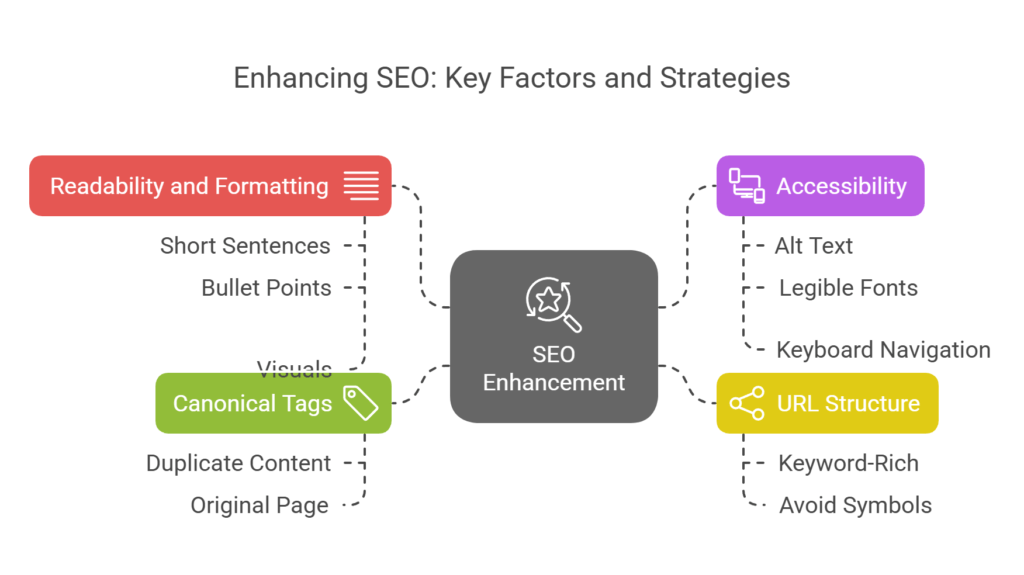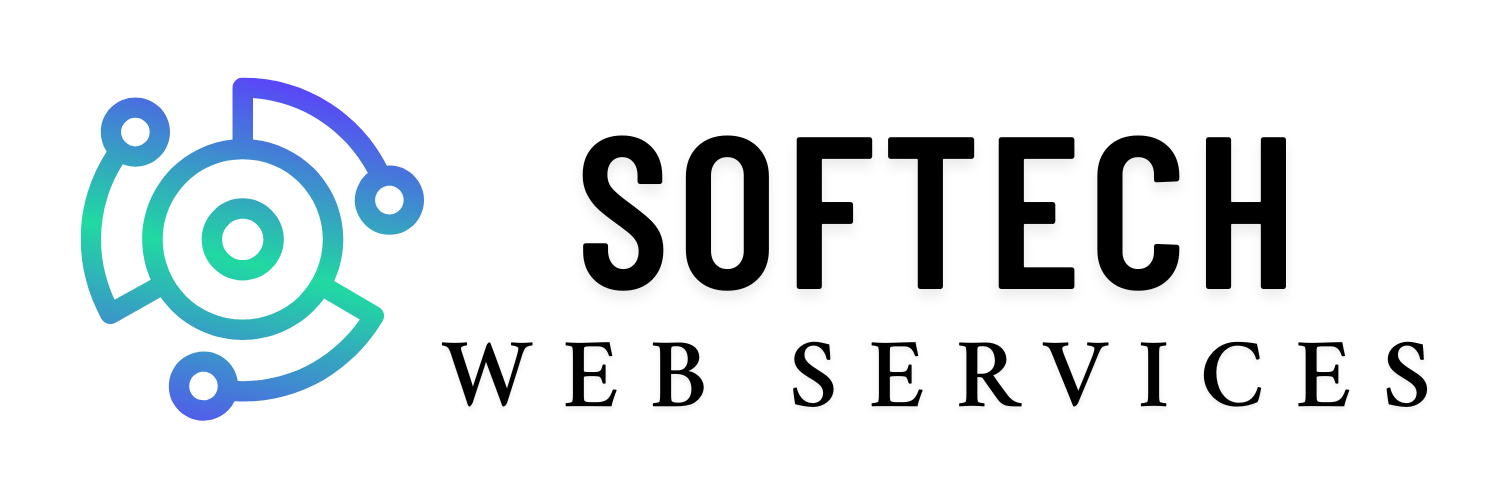Which Page Element Carries the Most Weight for SEO
In today’s digital world, knowing which page element carries the most weight for SEO isn’t just a smart trick—it’s a game-changer. Search engines like Google use complex algorithms to decide which web pages show up first in the search results. Among the many things that matter for rankings, some on-page elements hold more power than others. When done right, these can seriously boost your organic traffic and make your website easier to find.
What part of a webpage influences SEO performance the most? That’s a question every marketer and site owner should be asking. Understanding these elements can set your content apart in a competitive online landscape.
Whether you’re into digital marketing, writing content, or running your own site, this guide will break down the must-know page parts—like semantic HTML, site architecture, and how to give a smooth user experience—while keeping your SEO strategy on point.
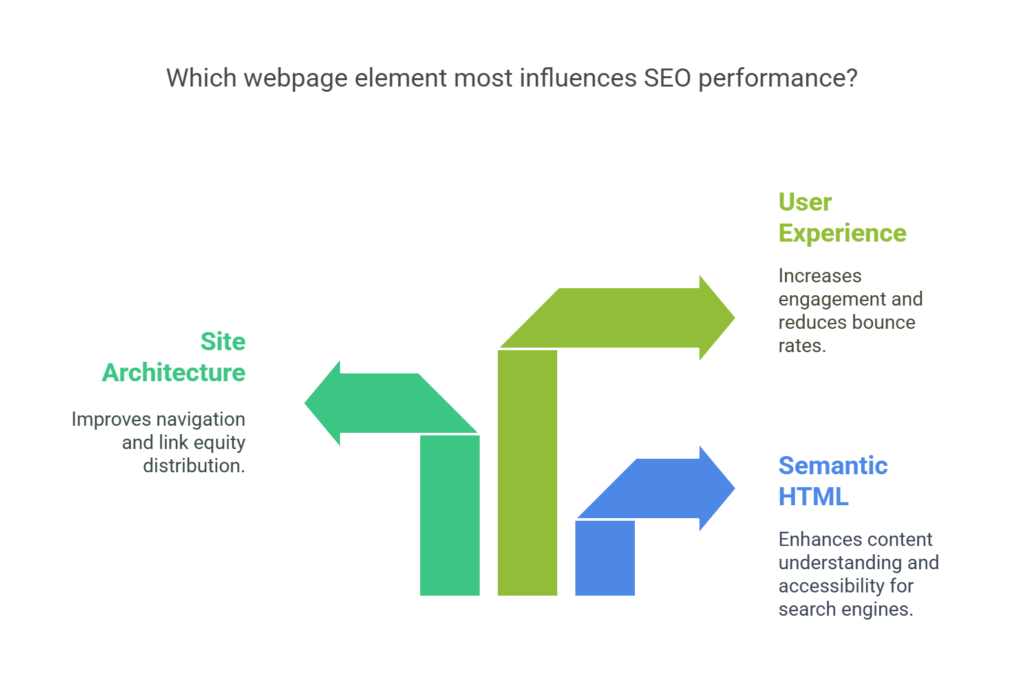
Table of Contents
- The H1 Tag: Small Element, Big Impact
- Content Quality: Your Page’s Secret Weapon
- Metadata: The First Impression You Can’t Ignore
- Mobile Optimization and Page Speed: A Must, Not a Maybe
- Schema Markup: Helping Google Help You
- Smart Site Architecture and Internal Links
- Content Freshness: Keep It Current
- Voice Search and Snippets: Quick Wins
- Social Proof and Backlink Profile: SEO’s Support System
- Extra On-Page Factors That Matter
The H1 Tag: Small Element, Big Impact
The H1 tag is one of the most important parts of your page. It’s the main headline, the first thing both people and search engines notice. It tells everyone, “This is what the page is about.”
Using your main keyword—like which page element carries the most weight for SEO—in the H1 makes your keyword optimization stronger and helps boost your visibility in Google.
Besides guiding readers, it also signals to search engine algorithms through clean HTML, showing them the page’s main focus. A strong page structure and clear content relevance start right here.
You should also avoid stuffing multiple H1s on a single page. Use just one and make it count. Pair it with logical subheadings (H2s and H3s) to support the main idea and improve content hierarchy.
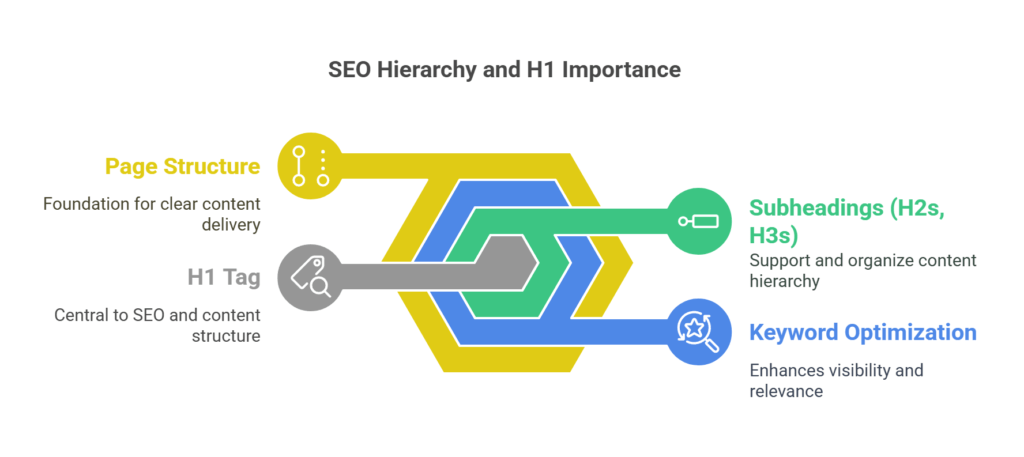
Content Quality: Your Page’s Secret Weapon
All the tech stuff in the world can’t save bad writing. That’s why content quality is so important. Today’s Google isn’t fooled by keyword stuffing—it looks for helpful, easy-to-understand content that actually helps people.
When your content is good, readers stay longer. That helps with things like dwell time and bounce rate, which play a role in your rankings too.
Want to rank for something like Impact of content quality on SEO rankings or On-page elements that influence dwell time and SEO? Make sure you’re writing for real people first. Clear, useful content always wins.
To ensure your content freshness, update your pages regularly. Adding new insights, images, or answers to common questions keeps your pages valuable. Don’t forget to check your top-ranking pages every few months and see if they need refreshing.
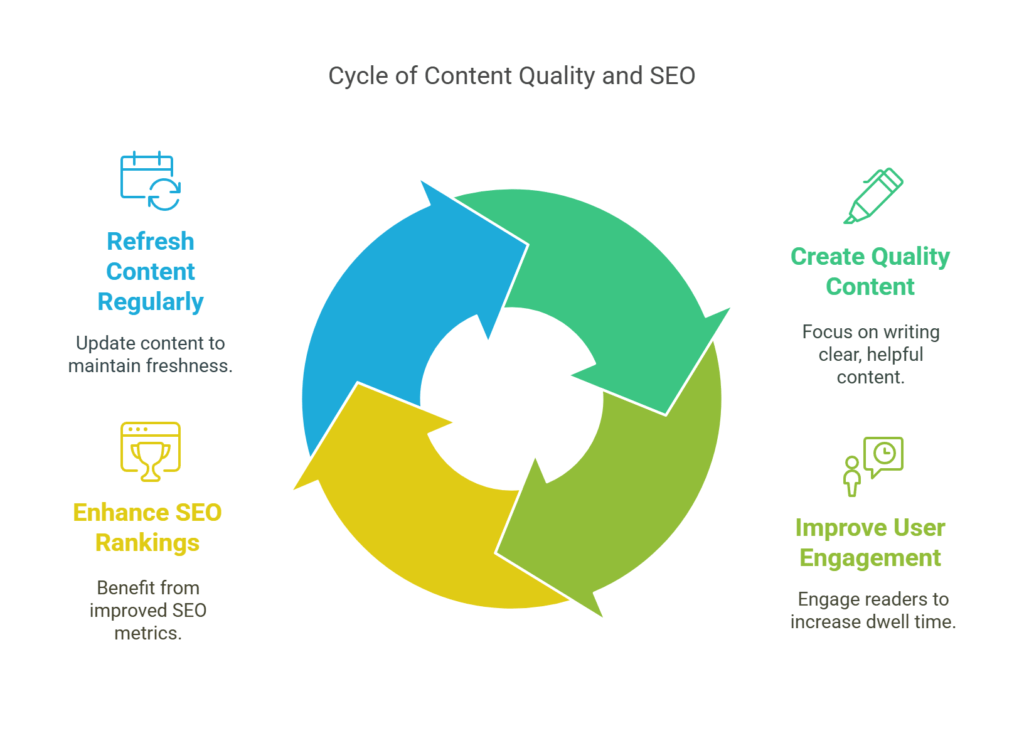
Metadata: The First Impression You Can’t Ignore
Even though it doesn’t show up on the page, your meta title and meta description are what users see in the search results. These little snippets help people decide whether or not to click.
Include your keyword naturally, and make the text appealing. It also helps your chances with things like local SEO. If you’re targeting which on-page element is most crucial for local SEO, this is where you can shine.
Use action words like “learn,” “discover,” or “find out” to drive engagement. And keep the title under 60 characters so it doesn’t get cut off. A well-crafted title and description can increase click-through rate (CTR), which improves overall SEO performance.
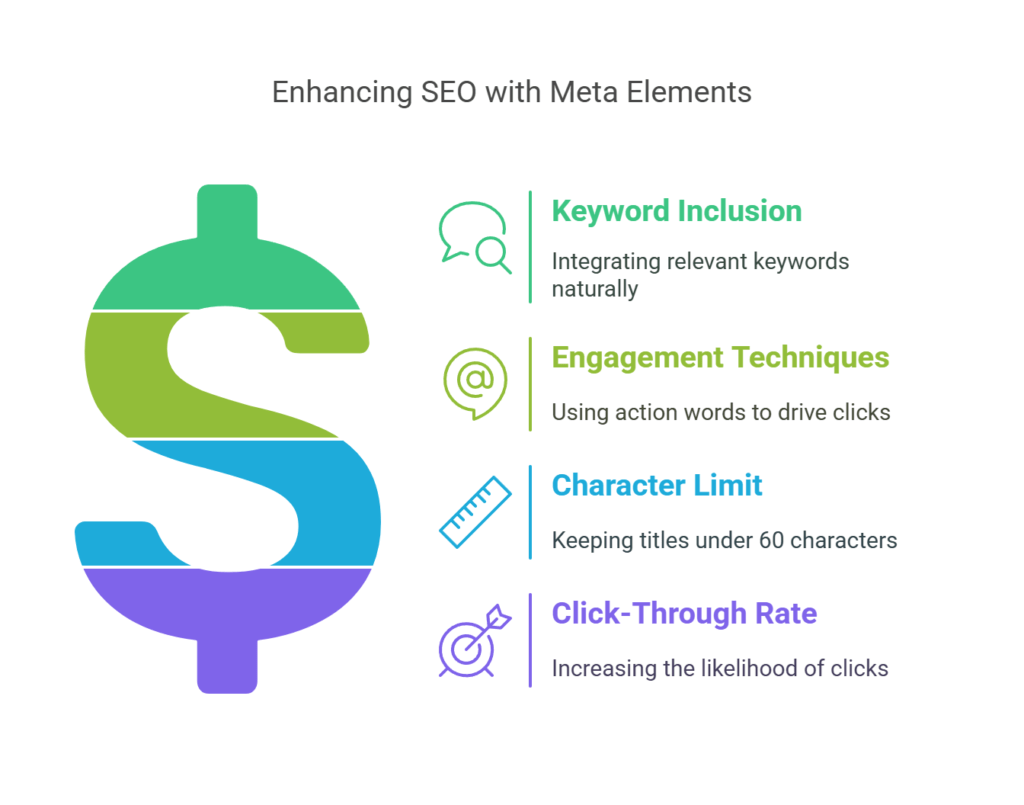
Mobile Optimization and Page Speed: A Must, Not a Maybe
Most users browse from their phones. So if your site isn’t mobile-ready, you’re missing out—and Google notices.
Pages that load fast and work well on all devices improve user experience and help your rankings. Here’s how to improve your speed for How to optimize page speed for better SEO performance:
- Compress your images
- Clean out unnecessary code
- Choose a fast hosting service
- Use browser caching
- Minimize HTTP requests
For better mobile SEO, make sure your code uses semantic HTML, your pages are easy to navigate (smart site architecture), and your layout follows a clear content hierarchy.
Also, test your site using tools like Google Page Speed Insights or GT Metrix to find and fix speed bottlenecks.
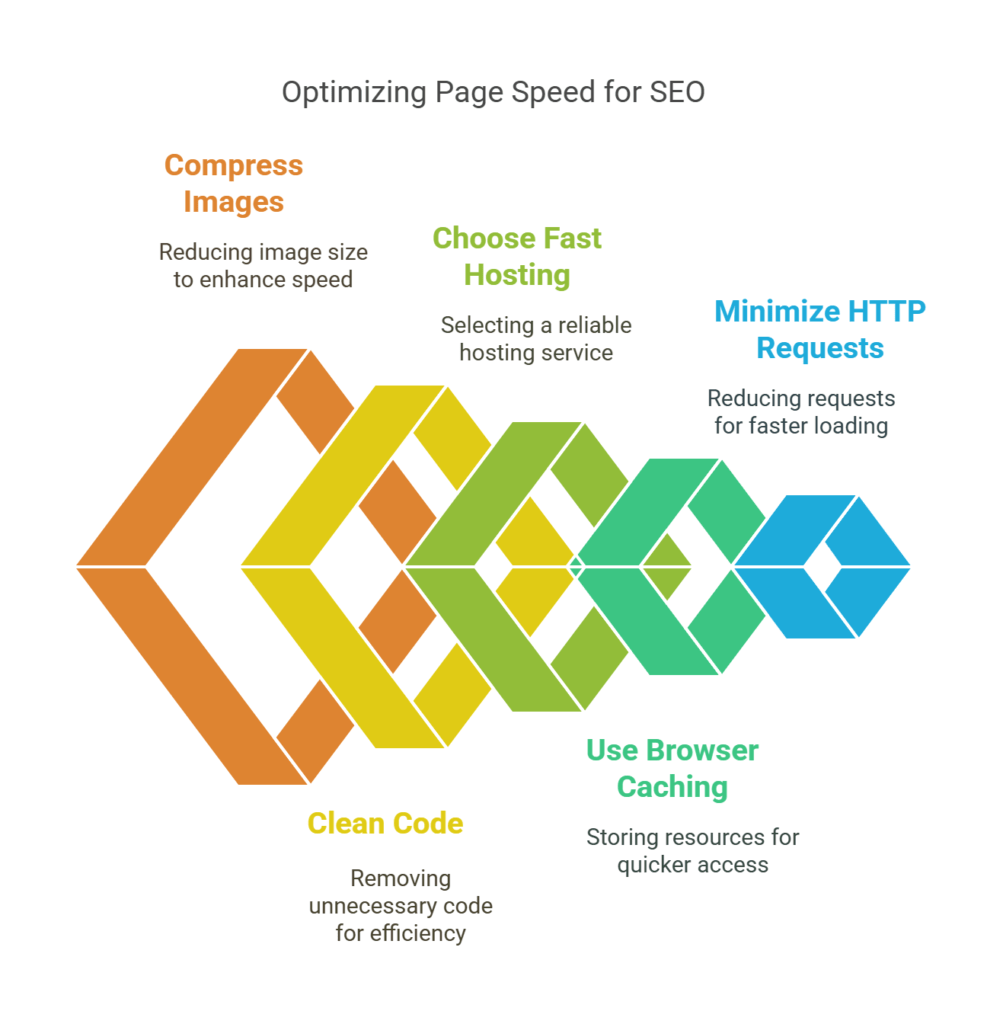
Schema Markup: Helping Google Help You
A lot of people skip schema markup, but that’s a missed opportunity. This extra code helps search engines understand your page better—and can earn you rich listings like stars, FAQs, or boxes.
Want to appear in featured results or target the importance of schema markup in on-page SEO strategy or on-page SEO elements for featured snippets? Add the right schema. It’s like giving Google a roadmap to your content.
Use schema types like:
- Article
- Product
- Local
- Page
- How-to
Adding schema markup through tools like Google’s Structured Data Markup Helper or plugins like Rank Math and Yoast makes it easy—even if you’re not a coder.
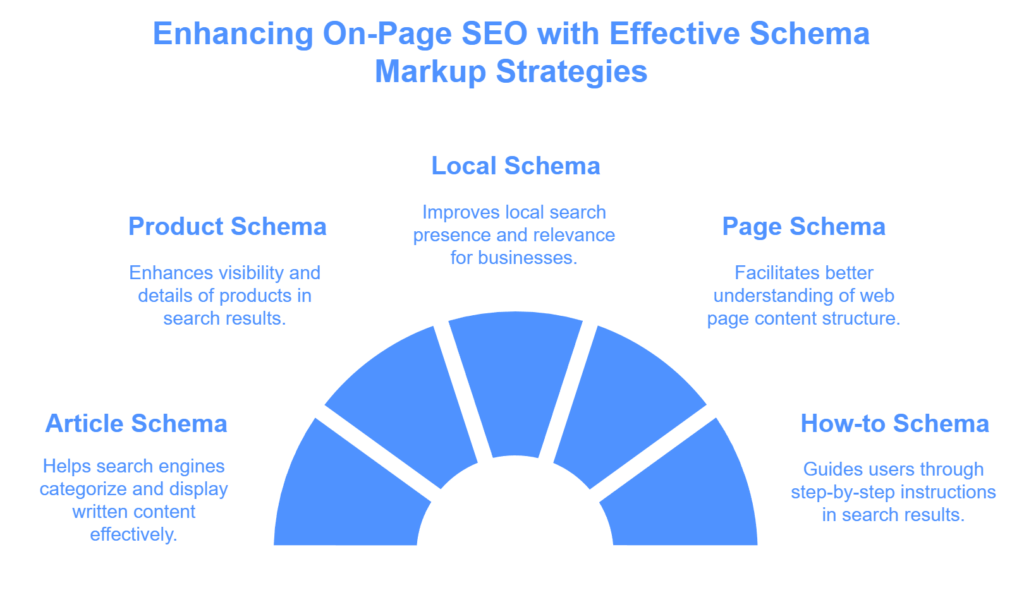
Smart Site Architecture and Internal Links
Your site architecture is how your pages are arranged and connected. When it’s clean and logical, both users and search engine bots can easily find their way around.
Internal linking (linking to your own pages) spreads value across your site and keeps users engaged. This improves dwell time and supports your SEO.
Pair good linking with semantic HTML and a well-thought-out content hierarchy, and you’ll help search engines really understand your site.
Follow a silo structure if possible. Group related content together and make sure each section has a clear parent page. This boosts your authority in specific topics and improves crawling.
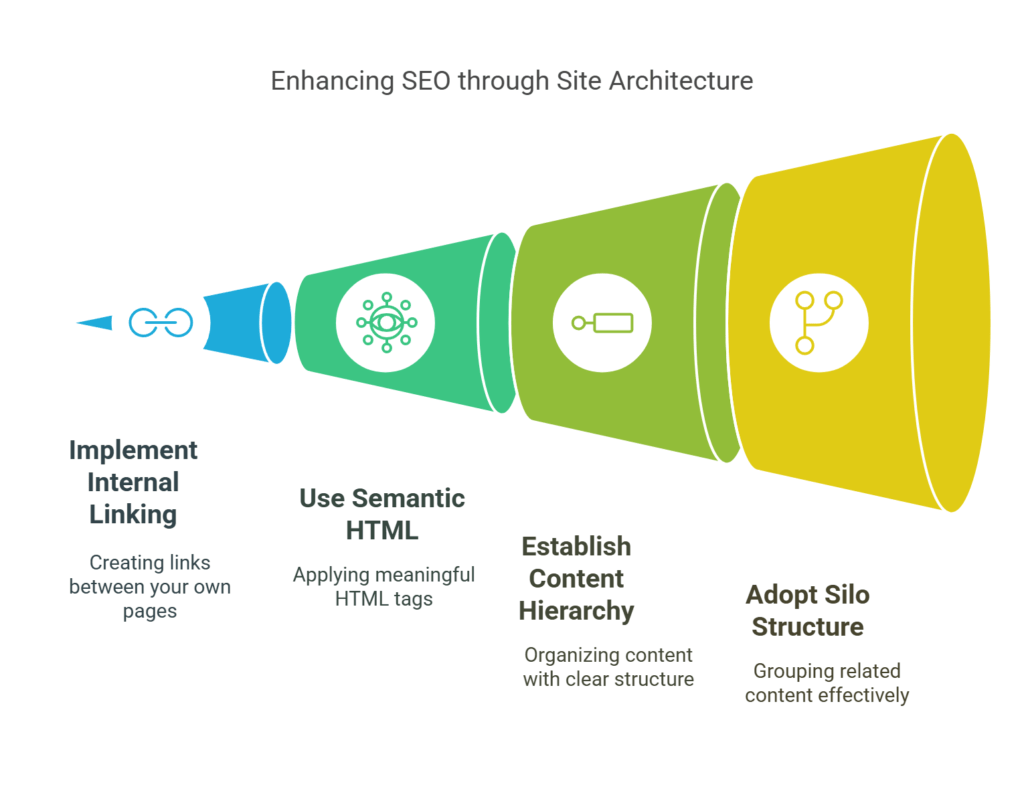
Content Freshness: Keep It Current
Nobody wants old, outdated info—and neither does Google. Keeping your pages fresh boosts your rankings and helps you stay ahead.
Trying to rank for balancing user experience and SEO in on-page elements? Keep your content clean, helpful, and up-to-date. Refresh it with new stats, updated answers, or recent trends.
Set a review calendar. Every 3–6 months, look through your top-performing content. Check if facts are still accurate and update where needed.
And remember: natural use of keywords keeps your content relevance strong.
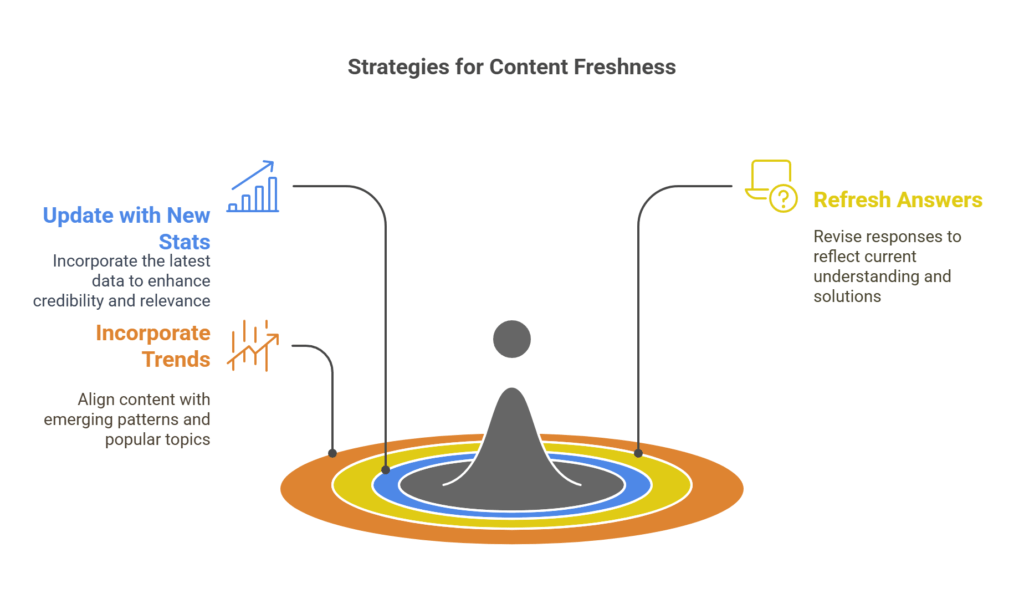
Voice Search and Snippets: Quick Wins
Voice tools like Siri and Alexa are changing the way people search. To win in this space, you need quick answers, natural language, and Q&A-style sections.
Think about phrases like on-page SEO elements for voice search optimization or how to prioritize on-page elements for e-commerce SEO. Use headers that ask real questions and give short, helpful answers. That’s how you land in those top snippet spots.
Structure your page with lists, bullet points, and short paragraphs. Add an FAQ section if possible. These formats help both readers and voice devices.
It’s also a great tactic for on-page SEO elements for featured snippets.
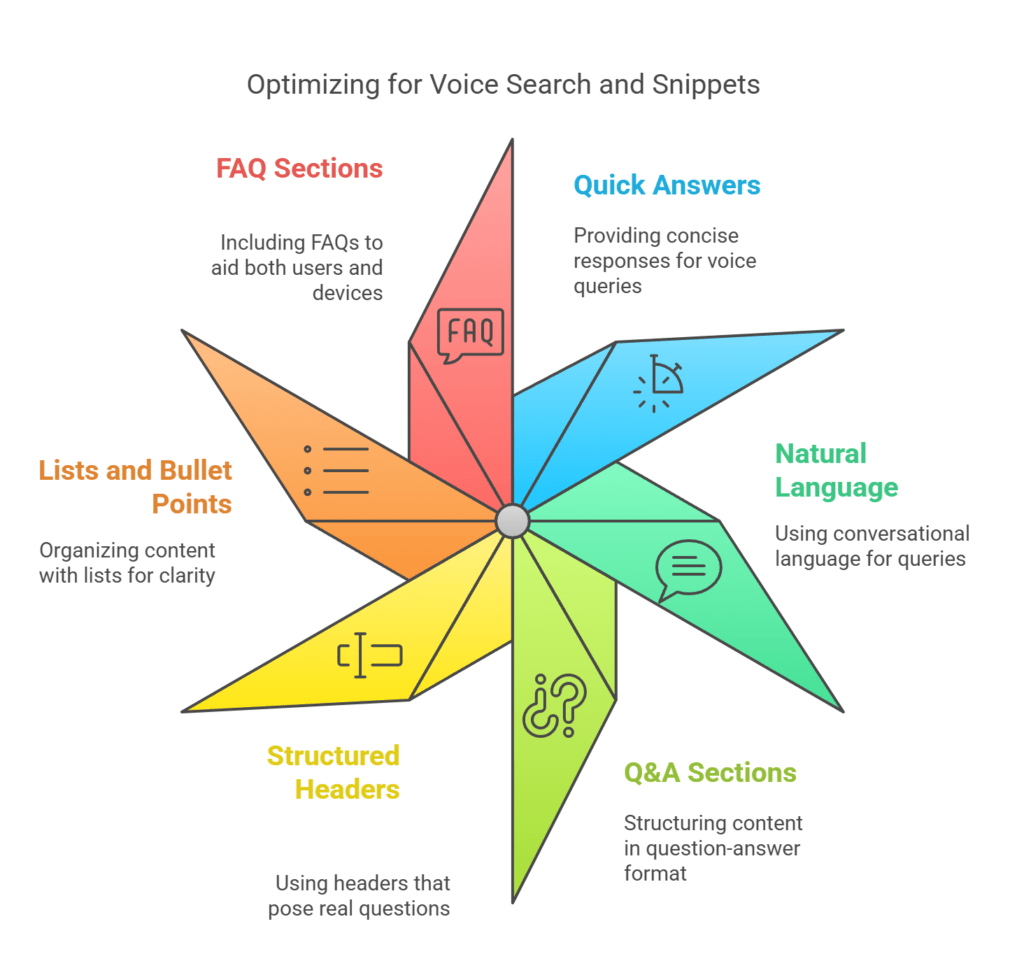
Social Proof and Backlink Profile: SEO’s Support System
While not on-page, your backlink profile and social signals (shares, likes, etc.) support everything you do on your site. They tell search engines that your content is valuable.
Pages with strong content quality, easy design, and smart structure naturally earn more links and attention. That’s why SEO and great content go hand in hand.
Encourage sharing with social buttons and write content worth linking to—how-to, stats, expert quotes, and tools work well.
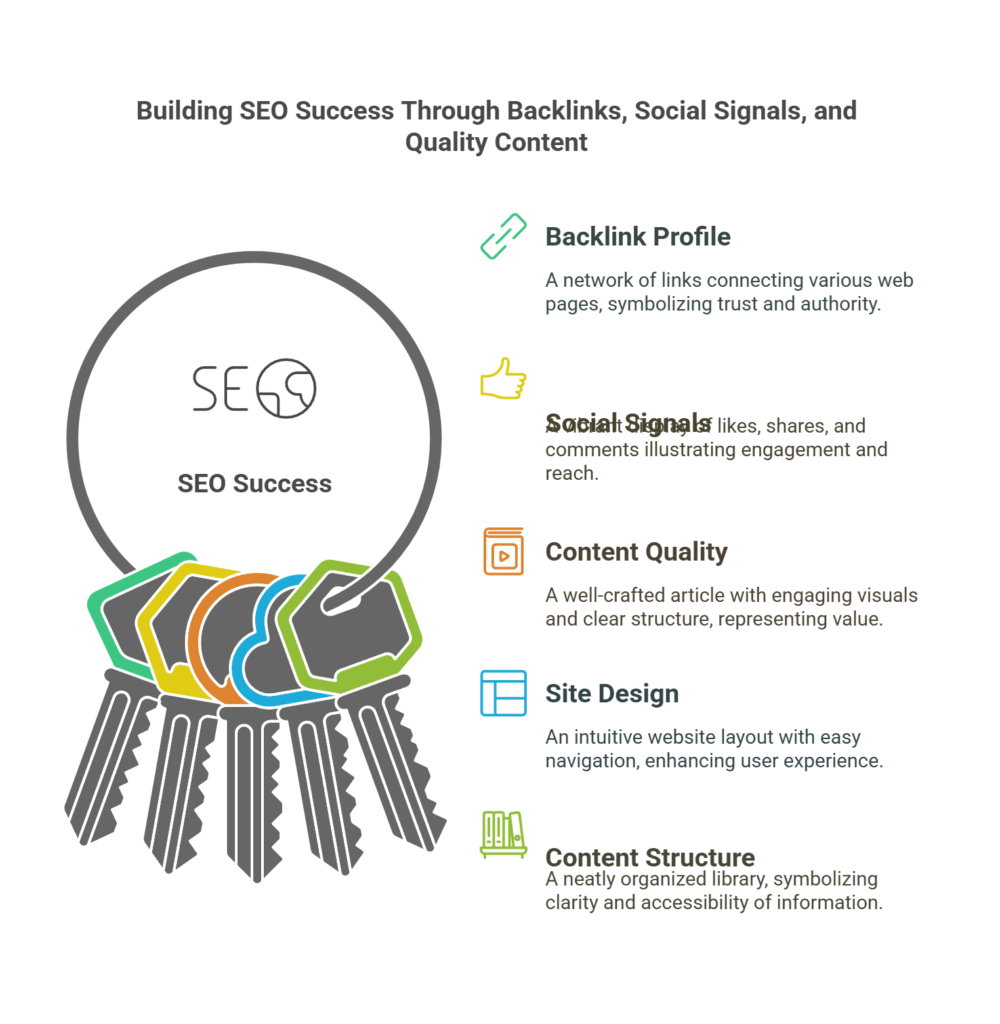
Extra On-Page Factors That Matter
Readability and Formatting
Easy-to-read pages keep visitors longer. Use short sentences, bullet points, and clear headings. Keep paragraphs around 2–3 lines max. Add visuals like images, videos, and infographics to break up text.
Accessibility
Good SEO also means making your site usable for everyone. Use alt text for images, make fonts legible, and ensure all navigation can be done with a keyboard.
URL Structure
Short, keyword-rich URLs work best. Avoid symbols and unnecessary words. For example:/best-seo-tips is better than /page.php?id=2341
Canonical Tags
If you have similar pages, use canonical tags to avoid duplicate content issues. This tells Google which page is the original.
